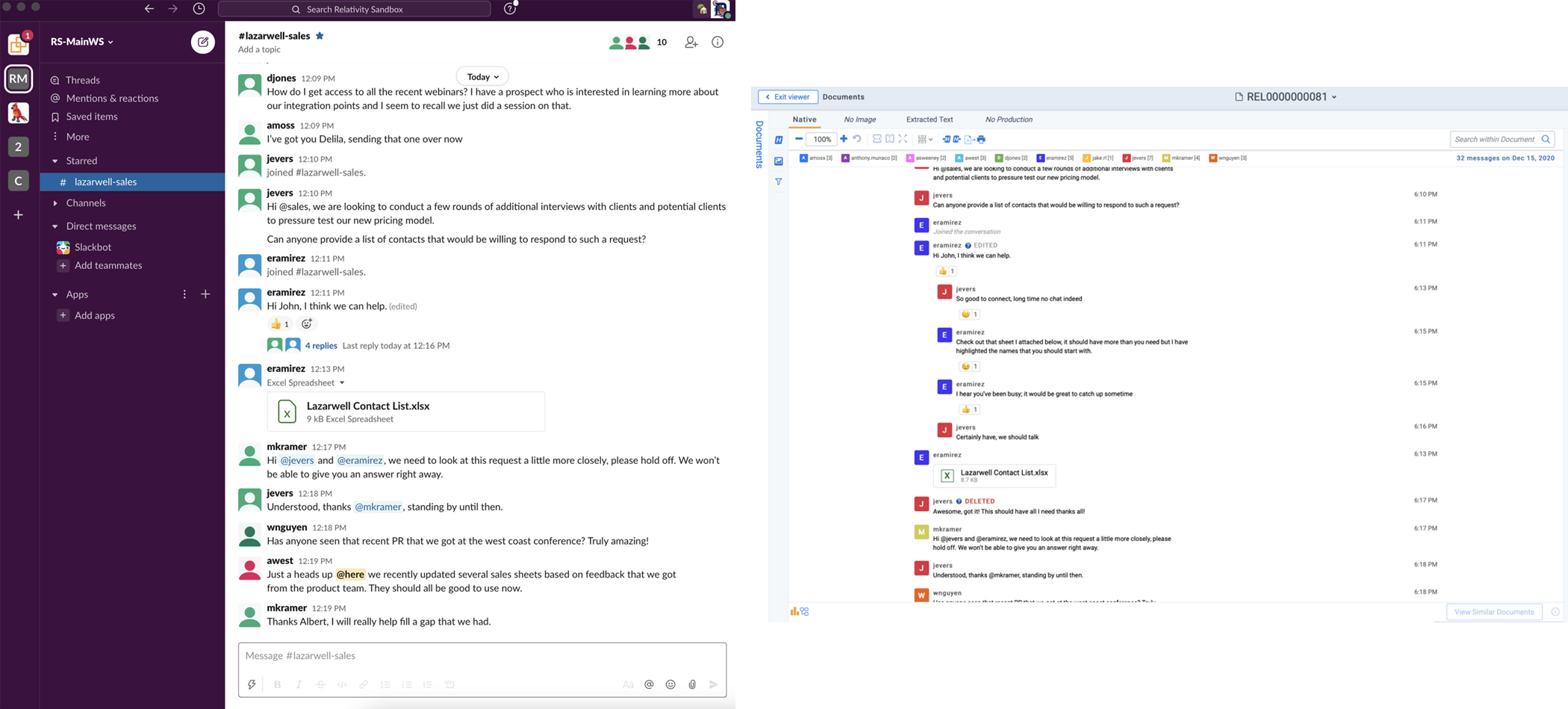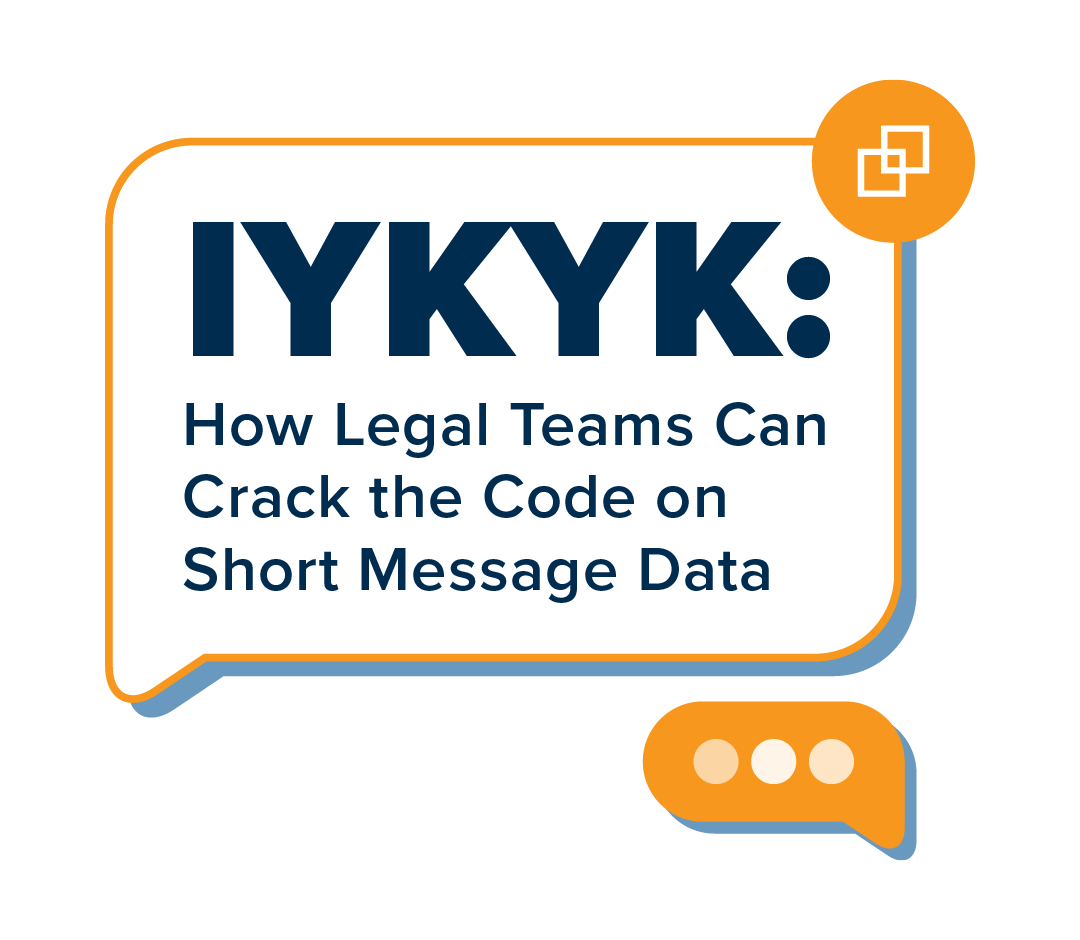Editor's Note: First published in 2021, this article provides an informative overview of the realities of short message data discovery, as well as insights into how modern legal teams are confronting one of the fastest-growing data types of the last few years. If you haven't already, we encourage you to give it a close read!
Communication between individuals and organizations is continuously evolving. The emergence and adoption of email over 20 years ago vastly improved the pace at which people could share information and documents. Goodbye snail mail, fax machines, and photocopiers! This revolution in communication didn’t just change how we communicated—it fundamentally changed the nature of business communications as we also said goodbye to formal memos and other hard copy documents.
We are now in the midst of another seismic shift. Over the past few years, we’ve seen the rise of chat and instant messaging applications which allow us to communicate and share all kinds of data much more rapidly and with greater brevity.
Many of the implications for business use of chat platforms and IM are obvious. First, as the old saying goes, time is money: the less time it takes to communicate important information to those who need it, the more efficient a business can operate. The ability to collaborate in real time to solve business challenges results in greater organizational efficiency, which ultimately saves money. This and a myriad of other benefits has driven the use of chat exponentially, and the trend will continue for the foreseeable future.

What Is a Short Message?
“Short message” is a term used to describe data that encapsulates normalized messaging conversations. Often these messages are shared rapidly in brief snippets between multiple parties, which means, from a review perspective, it can become very complicated, very quickly compared to more straightforward email threads.
This type of file can come from text messages like SMS or Apple iMessage, or from instant messaging services such as Slack, Teams, Google Chat, Zoom, or Bloomberg Chat. Exports may take many different forms such as JSON, XML, and TXT, and, on their own, these files historically have not provided a very friendly experience for review teams.
Implications and Challenges for Short Message Data in e-Discovery
Chats and IMs have become an integral part of regular business operations with more and more conversations moving to these platforms and formats. Messages in this format have become shorter—and, as a result, are more dependent on the surrounding context to make sense.
For example, it can be easy to miss a critical piece of the picture as conversations flow across a number of different platforms and are imbued with all kinds of subtle context. The details can be easy to miss when viewed in a non-native format, such as the timing of replies, non-text reactions such as “likes,” threads within threads, and emojis.
As more teams incorporate these channels into their typical business practices, it stands to reason that litigants will want to capture this information as part of discovery efforts for litigation, compliance reviews, and investigations—after all, critical conversations are happening in these platforms every day. But without the ability to quickly and easily collect and interpret a whole conversation, it becomes impossible to form a complete picture of the activities, intent, and context of communications conducted by individuals across channels. Only reviewing email simply won't cut it anymore.
Dealing with these data sources has posed some pretty tricky issues for those e-discovery practitioners. Increased requirements to collect, process, and review short message data present a number of specific challenges, such as:
- Collections from short message platforms can be difficult without the right tool. At the same time, exporting native chat and IM data can be time consuming and error pone.
- Export formats vary across applications, requiring different processing capabilities or troubleshooting know-how for each type.
- Native exports are notoriously difficult to standardize and review. JSON, XML, and TXT dumps are often extremely large, and the structure of the data is not readily “human readable.”
- Maintaining a definitive audit trail is critically important to ensuring a defensible process every time. If this data is not handled correctly as it’s collected and “translated” for review, that defensibility can be lost.
- As new platforms and functionality emerge, ever evolving techniques to collect and process data will be required and workflows will need to be adapted.
%20(1).png)
These challenges can seem daunting—and for those who have already begun working with short message data, they are all too familiar.
A Solution for Short Message Reviews
Proper human handling of short message data for e-discovery purposes must be preceded by proper technological handling. That means you’ll need collection software that can pull this data effectively and securely, and review data that will present it to your team in a readable, familiar way that will aid in good decision-making about each conversation’s relevance to the matter at hand.
In the Relativity community, we heard from many users who were encountering these data types with increased frequency—and urgency—and needed the platform to work better for them in handling it properly. In response to this demand, the Relativity Short Message Format (RSMF) was born.
As the name indicates, RSMF is a structure for short message data. This format tackles a number of the challenges associated with this kind of data by standardizing how it’s structured and displaying it in a native format, resulting in a superior review experience. Chat data and IMs can be viewed as if you were using the custodian’s native chat application, presenting all the nuance and interaction it was designed to have.
We want discovery and compliance teams to be able to treat collaboration data like a conversation. Here is a side-by-side example of what was collected and what a reviewer sees when viewing chats in Relativity.

RSMF brings targeted chat and instant message data into Relativity in a way that preserves nuance, giving reviewers an intuitive interface that looks more like the native chat application.
Today’s short messaging applications contain so much more information than just the text that users type into a chat. RSMF works to better present elements like emojis, reactions, attachments, edits, and deleted messages. Often, this additional information can provide important context that can make or break a matter or a custodian’s involvement in it.
By leveraging RSMF in RelativityOne, users can see the richness of communication and collaboration data, enabling better use of artificial intelligence to get results more quickly and reduce false positives.
How Do You Prepare for What Comes Next?
It’s hard to know what the future of workplace collaboration software will bring. To name a few possibilities, we may see further evolution like increased use of automation and bot assistants, more seamless integration with cloud office suites, or automated real-time translation capabilities.
What is certain is that any of these changes would have significant implications for how you collect and interpret data—and you’ll need a plan in place to roll with the punches before trouble hits.
The best solution to adapt to changes, whatever they may be, is to be prepared and have the resources, team, and partnerships in place before you need them. Having a solution or partnership that will support your efforts in monitoring for change and ensuring your team can easily and defensibly respond is the best way to stay prepared.
The wheels of change will keep turning and they won’t slow down. With the meteoric rise in short message data and the nature of work becoming more collaborative across enterprise technology platforms, be sure you and your team can retain all the valuable context and metadata unique to those platforms.












